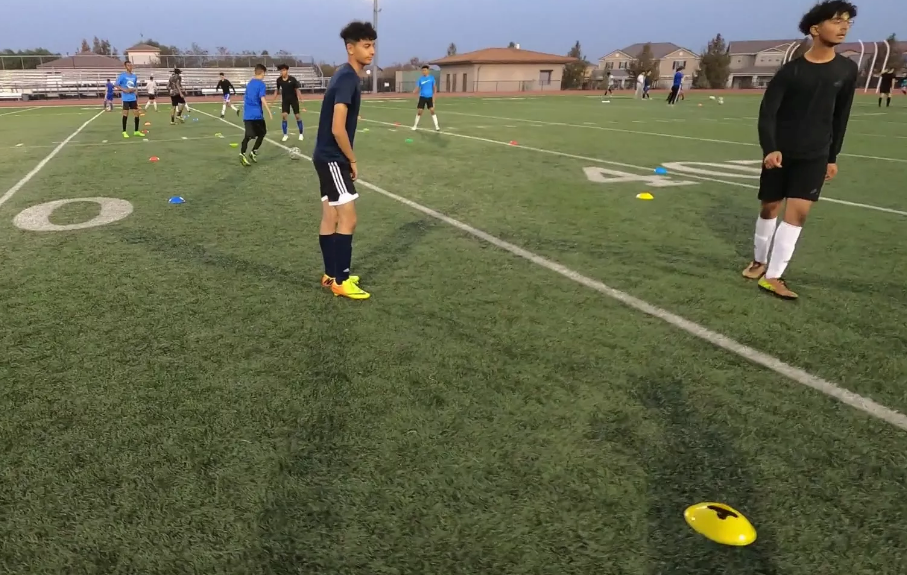Bibs, balls, and cones are the coach’s essential equipment list for training sessions. Portable goals, agility equipment, stick flags, and a tactical board round out the contents of what I pack into my car. For a long time, my cone color palette consisted of orange with some yellow mixed in. Upon joining a new club, I was handed a cone tree with a rainbow of colors – yellow, orange, red, purple, green, blue, and pink, among others – in random numbers. The club operated this way – I also had a variety of bibs and soccer balls of various makers, colors, sizes, and quality.
I’ve made the use of colored cones into a staple of my training session planning and execution, with all of the age groups that I work with.
When I work with younger players – especially U8 and below – I try to provide a visual attraction for the players when I arrive. The players should see practices as a space for play and enjoyment – after all, they are children. When planning sessions, I often consider how the field will look when the players arrive – the use of color is an important element of delivering “curb appeal.” I try to mix both color and equipment (flags, mini-goals, various sizes and colors of balls, rings, etc.) to make each day’s session an event.
Color is also valuable as a platform for teaching within practice sessions with younger players. When working with larger groups, it can be a challenge to keep the players on-point. My objective, generally, is to provide a collection of problems for the players which they can solve based on previous learning within the framework of the game with limited (or ideally no) specific direction from me. During an academy season, I try to progress through cognitive stages to increase the complexity of the problems. As a baseline activity, I place a set of randomly distributed gates (pairs of cones about 2 yards apart) in a large space and ask players to perform an action (for example, dribble through the gates, then dribble back to me). With colored cones, I can put a variety of colored gates in the space with several of each color. My first instruction might be, “everyone dribble through a red gate, then back to me … go!” I will then extend that to a series of colors (“red, then green, then blue”), then add a different activity (“dribble to the color, do a pullback, then to the next color”), then change to pairs of players (“pass through the gate”).

The use of colored cones can also provide an organizational framework for the session. I am fortunate at the high school where I coach that I have a 60-yard square space for 24 players. My goal when I put together a session is to be able to put the cones on the field once and progress the session by picking up cones as I go or with minimal movement of the cones. What I try to avoid is having to stop the practice, send off the players, and spend several minutes rearranging the field. Avoidance of long breaks is especially crucial when working with younger players – they simply do not have the attention span to sit quietly during a 3-5 minute break where my attention is on the ground.
Here is is the series of layouts in a session that I recently ran:

My goal is to “multi-purpose” the spaces used for each activity so that I can direct players from one space to another. The use of colored cones demarks for the players the boundaries for smaller activities – “I need one group in the yellow box, another in the blue box, and a third group in the green box” – and the spaces as the number of players in each activity gets larger – “OK, we’re going to make one big space out of the blue and green cones.”
This plan doesn’t always work – and there are some situations in which I have to rearrange a field completely – but, with experience and commitment to the idea, it is much more often the case that I can run seamlessly from beginning to end. I will often ask the players to help out – “boys, pick up all of the orange and red cones, leave the yellow ones for the next activity.” I have more-or-less trained my players to expect this sort of transition through the space.
I purchased my cones at Amazon (link) but there are a variety of companies that make sets of colored cones.
As much as coaching involves an understanding of psychology, physiology, technique and tactics, the ability to communicate, and a love for the game – the ability to organize and deliver training sessions is fundamental to success. The use of colored cones and their integration into my planning and execution processes has helped me be more efficient within my training sessions.